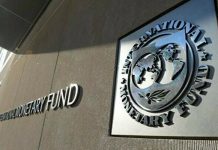DM Monitoring
BEIJING: China’s central bank announced on Monday that it will raise financial institutions’ required reserves for foreign-currency deposits by 2 percentage points starting from June 15, a move that’s expected to pour cold water on the recent speculation-fueled yuan rally that has sparked worry among policymakers and analysts.
The increase to 7 percent from the current 5 percent was intended to strengthen foreign-exchange liquidity management for financial institutions, the People’s Bank of China (PBC), the country’s central bank, said in a statement.
It marks the first revision of the ratio in 14 years. The previous change occurred in May 2007, when the ratio was raised to 5 percent from 4 percent.
This is a much-needed indirect effort to prevent the yuan from continuing its rapid rise, which is being driven by speculation and arbitrage rather than economic fundamentals, analysts said.
Financial institutions will have to hold more foreign-currency deposits as reserve requirements at the central bank, which is estimated to involve about $20 billion in foreign currencies, according to Lian Ping, head of Zhixin Investment Research Institute.
Foreign-exchange market liquidity will be tightened accordingly, reducing forex supplies from financial institutions and easing appreciation pressure on the yuan, Lian explained.
The move on Monday indicates that the central bank won’t allow the yuan’s rapid rise to go unchecked and will step in when necessary, said Guan Tao, BOC International’s global chief economist. Further, the PBC will strike a heavy blow if it does decide to intervene, according to Guan, a former official with the country’s forex regulator.
The yuan’s daily fixing was set at 6.3682 against the greenback on Monday, gaining strength for the fifth consecutive trading day, official data showed. The Monday announcement is likely to result in short-term volatility in the yuan’s exchange rate against the US dollar, which might weaken to around 6.5, Tian Yun, former vice director of the Beijing Economic Operation Association, told the Global Times on Monday.
The resultant repercussions might linger throughout the second half with moves in the pipeline to tighten overseas US dollar liquidity, while increasing offshore yuan liquidity, Tian said. The yuan’s rapid appreciation wasn’t based on economic fundamentals – rather, it was spurred by short-term capital flows in pursuit of arbitrage and speculative gains, Tian added.
The yuan’s substantial ascent over the short run bodes ill for the currency’s stability and the security of the financial system, he continued, describing the latest move as a clear-cut warning from the central bank about the yuan potentially eyeing levels south of 6.3.
The decision came after comments from top policymakers who were intent on convincing the markets of two-way fluctuations in the yuan’s exchange rate and an unjustifiable continuation of yuan strength over the short run.
The yuan might have overshot, and its rapid gains would be unsustainable and could hurt Chinese exporters, Sheng Songcheng, a former central bank official, told the Xinhua News Agency in an interview on Sunday. A commentary from Financial News, a PBC-run publication, said on Sunday that the yuan is also under pressure to deprecate.
Over the longer term, however, the yuan is still poised for a gradual rise against the dollar, Tian pointed out, reckoning the yuan will hover around 6.3 at the year-end before ascending beyond 6 by 2025, the final year for the 14th Five-Year Plan (2021-25). Tian pointed to the prowess of China’s supply chains, which has become even more prominent amid the COVID-19 pandemic, and the country’s rapid advances in services trade that may result in a balance of payments or even a surplus in services trade by 2025. These factors are likely to redefine the yuan’s equilibrium level in the future, he said.




